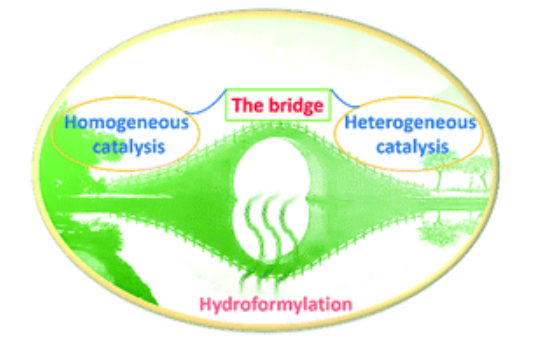Abstract
The hydroformylation of alkenes, the most important homogenously catalyzed industrial process, has been widely used for the manufacture of aldehydes, and the resulting aldehydes are further converted into highly value-added alcohols, acids and other derivatives. For hydroformylation processes, homogeneous catalysts exhibit the advantages of specific reactive sites, prominent activity and selectivity, while heterogeneous catalysts exhibit the advantages of easy recyclability and separation of the catalysts and products. However, the poor recyclability of traditional homogeneous metal complex catalysts and low reactivity and stability of heterogeneous metal nano-catalysts are still huge challenges. Notably, the construction of catalytic materials that integrate the advantages of homo- and heterogeneous catalysis provides new opportunities for highly efficient heterogeneous hydroformylation. Herein, the research progress of the catalytic materials that merge homo- and heterogeneous catalysis in hydroformylation is reviewed (classic liquid-liquid biphasic systems are not included owing to the insightful discussion reported in previous reviews) regarding their synthesis, material characteristics and application according to the classification of their diverse properties and their perspectives for the future are prospected.

Keywords Plus:POLYMER-SUPPORTED RHODIUMHIGHLY SELECTIVE HYDROFORMYLATIONPOROUS ORGANIC POLYMERSPOLYHEDRAL OLIGOMERIC SILSESQUIOXANESFIXED-BED HYDROFORMYLATIONASYMMETRIC HYDROFORMYLATIONCOMPLEXED DENDRIMERSREGIOSELECTIVE HYDROFORMYLATIONHOMOGENEOUS HYDROFORMYLATIONBIPHASIC HYDROFORMYLATION
Published in CATALYSIS SCIENCE & TECHNOLOGY,Volume12;10.1039/d2cy00845a,AUG 16 2022


